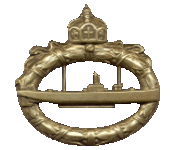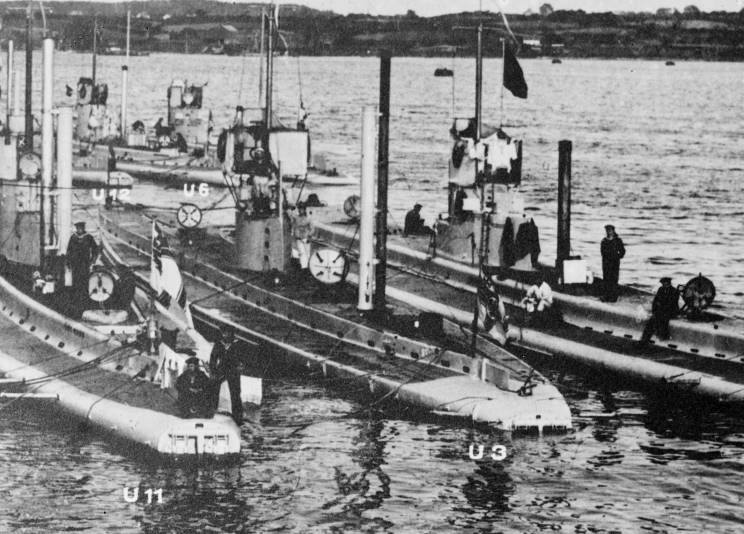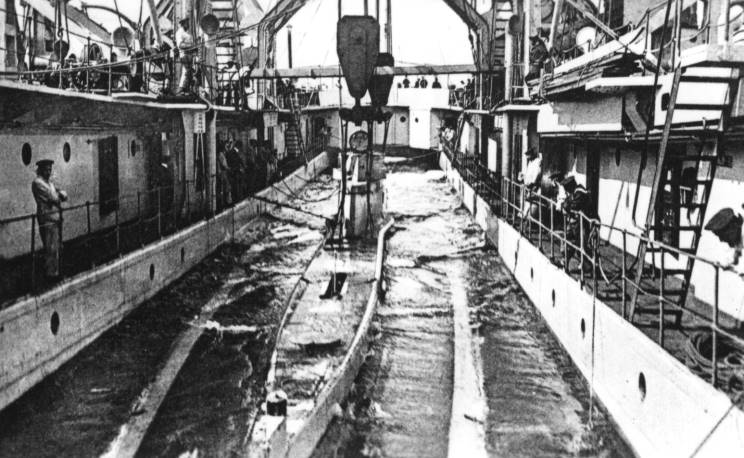|
During wartime submarines were feared and their loss was often celebrated by the enemy, but during peacetime the loss of a submarine was a solemn occasion no matter whose navy she belonged to. In the early years of submarine development many tragedies occurred, a sad reality that is to be expected with any new technology. On January 17, 1911 it was the Kaiserliche Marine in the spotlight when SMS U-3 sank in Kiel Harbor. U-3 was exercising with SMS U-1 when the incident occurred. The two boats were apparently practicing running on the surface, partially submerged with only the conning tower showing. At about 1100 water began to fill the stern of the U-boat and take her down. The incoming water could not be checked and the pumps apparently chose this moment to fail. The water was coming in through a vent which had been closed, but these was a defect in the mechanism which was unknown and even though the valve showed to be closed, a gap of 3cm remained. This was enough to sink the already mostly submerged boat. The commanding officer acted immediately and decisively, actions which cost him his life. His first order was to blow the stern tanks, then to drop the safety weights, but neither righted the boat. The extreme angle caused acid to spill from the cells which caused a loss of power and deadly chlorine gas to begin to fill the boat. The crew abandoned the after sections and closed the bulkhead. A telephone buoy was deployed which was found by surface ships and communication was established with the boat by noon. The situation in U-3 was going downhill quickly, but all haste was made by those on the surface. The submarine rescue ship SMS Vulcan was dispatched to the scene and had arrived within the hour, a floating crane was also sent to the stricken boat. As time went by water and fumes began to invade the middle of the boat and the commander then ordered his men forward, however he and two others remained amidships attempting to blow the forward tanks and raise the bows above the water. It was not long before the control room became uninhabitable and the three men moved into the conning tower, but continued the effort to save the rest of the crew. Their efforts failed, but by 1800 the crane had pulled the bows out of the water and an hour later the twenty-five men in the forward torpedo room escaped through the torpedo tubes. It was then learned by those on the surface that three men were trapped in the conning tower. There was no possibility of raising the boat any further out of the water and because the telephone failed shortly after the control room was flooded, it was unknown if the three men were even alive. Someone came up with an idea of how to contact them, they wrote on paper and held it in front of the periscope. To their surprise it was answered. The messages were responded to in a coherent manor, but as time went on the replies became confused, a sign that the men were slowly dying. A second crane was moved into place and an attempt to raise the entire boat was made, but twice the lines parted. It was finally decided to lower the boat back to the bottom and move Vulcan into place and raise the boat. It took until after 0400 the following day to bring the boat to the surface, but by then the three men had perished. It was a sad ending for the three brave men and for all those trying to save them. In honor of the lost men all ships in the area lowered their flags to half staff. The funerals for the men were held at two locations, the commander's service took place at Darmstadt and was attended by an estimated 10,000 people including representatives from the Kaiser Wilhelm II, the Grand Duke of Hesse and Prinz Adalbert of Prussia. The other service was held at Kiel in the Naval Garrison Church and was attended by Prinzessen Henry of Prussia with her sons Prinz Waldemar and Prinz Sigismund who laid wreaths on the coffins. In the inquiry it was determined that the defective valve mechanism was the cause of the loss, and that no crewman was responsible. Kaiser Wilhelm II decorated several of the men, but I have been unable to learn who was decorated or what award they were given. U-3 was repaired and returned to service, but she never sailed on a war patrol. She was used as a training boat throughout the Great War and was surrendered after the war. She "accidentally sank" while en route to Preston, England to be scrapped. |
© 2014 Michael W. Pocock MaritimeQuest.com |
Gedenktafel |
 |
In Erinnerung an die gefallenen Besatzungsmitglieder der SMS U-3 |
"In memory of the fallen crewmen of SMS U-3" |
Name |
Rate |
Notes |
|
Fischer, Ludwig |
Kapitänleutnant |
Commanding Officer |
|
Kalbe, Willy |
Leutnant zur See |
||
Rieper |
U-Matrose |
 |
SMS U-3 seen at center. |
 |
An unidentified U-boat seen inside the well of SMS Vulcan. |
2005 Daily Event |
2007 Daily Event |
|